I think it’s some sort of law, that when you are writing about a DeLorean, you have to mention a certain movie in the first paragraph. So – Back to the Future. There you go, it’s out of the way.
Mike Baucke and his wife Irene have owned a huge range of cars, always something a bit special; a Porsche 911 Targa, a Maserati BiTurbo coupe, a 1965 Ford Fairlane. So they were always keen on anything – European, American, German – they were an open book.
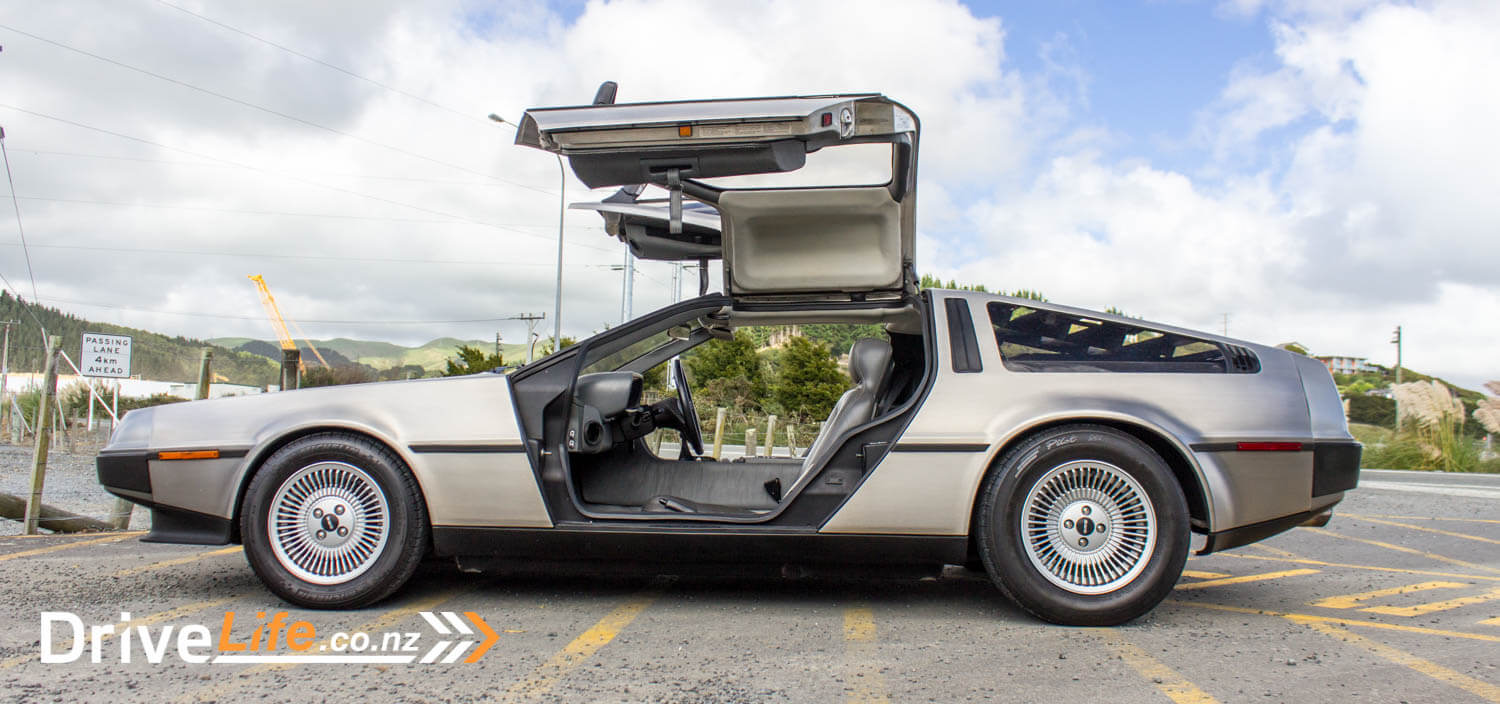
When they decided to buy ‘another’ unique car, they had some requirements. These included low manufacturing numbers, and especially a good story behind a car.
At the time, Mike and Irene were the owners/operators of The Surgery, a classic car restoration shop in Tawa in Wellington, and was doing some detailing work on this DeLorean.
“The owner mentioned he was looking to sell it, and it fit our criteria. Must have been the easiest sale ever.”
Their DeLorean is a 1983 model – last of the run, and according to Mike, “by the end of the three-year production run, they had ironed out most of the bugs”.
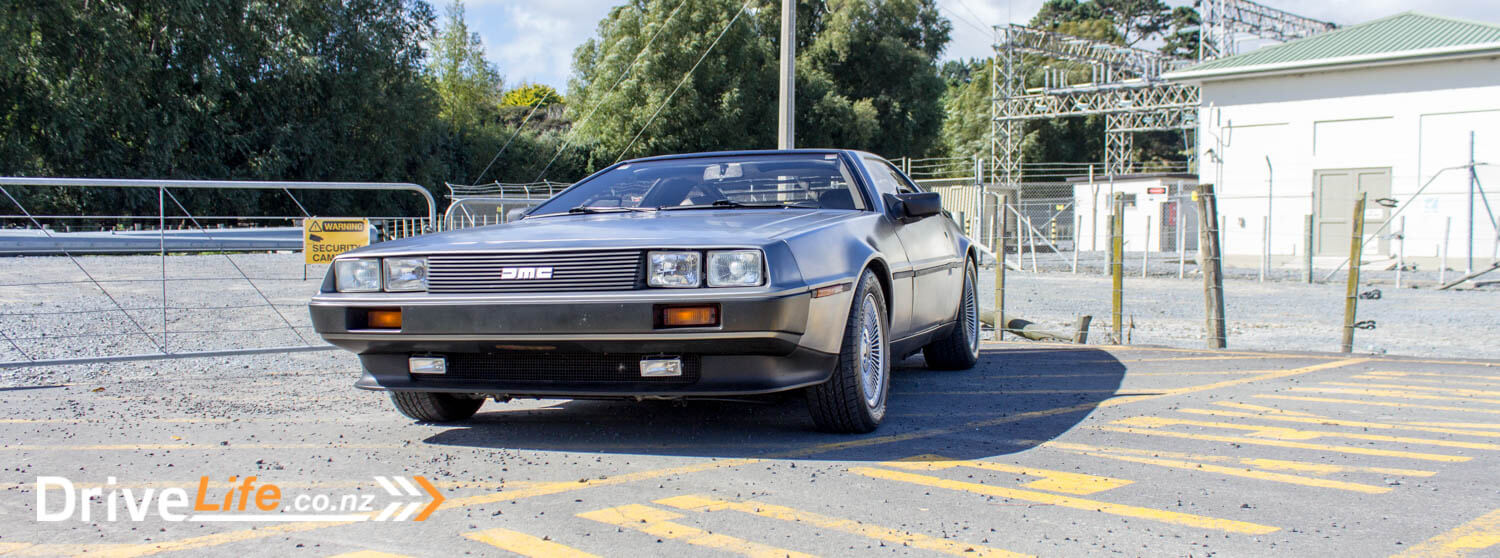
The DMC12 (its official model name) was only made from 1981-1983, when the company went bankrupt, in spectacular fashion. Those too young to remember won’t know that the owner of the company, John DeLorean, ended up being caught up sting (in a cocaine bust) to try and keep the company afloat. It didn’t work. He was charged, but was acquitted. But it was too late for the DeLorean company.
The car itself was called the DMC 12 because it was supposed to sell for US$12,000. It didn’t, by the way, in the end they sold for US$25,000. A slight difference.
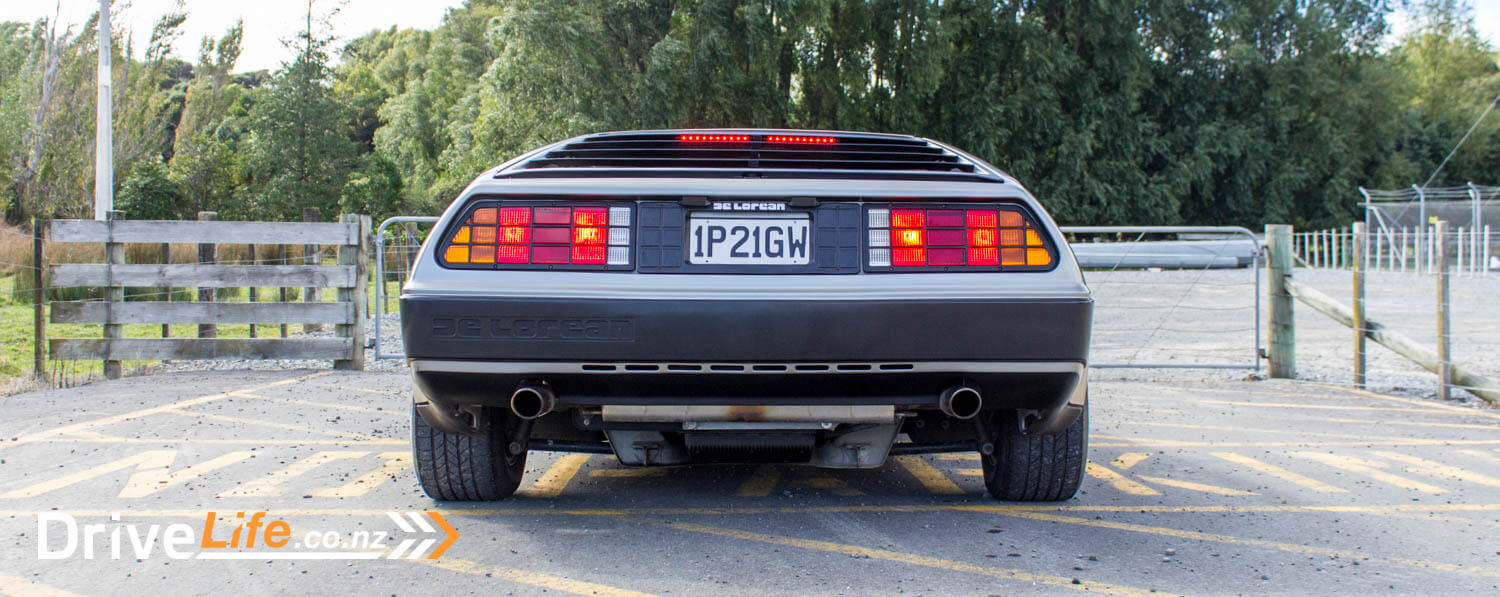
Mike bought his car from a guy who owned it in the USA, and apparently the car had a lot of issues when he got it.
Luckily, there’s a company in Texas who is not just manufacturing parts, but are going to start producing entire cars. This meant parts are not a problem.
“Basically the previous owner went along to the parts company, and ticked lots of boxes for parts he wanted.” Mike has receipts from the previous owner for parts for a “substantial” amount for their car.
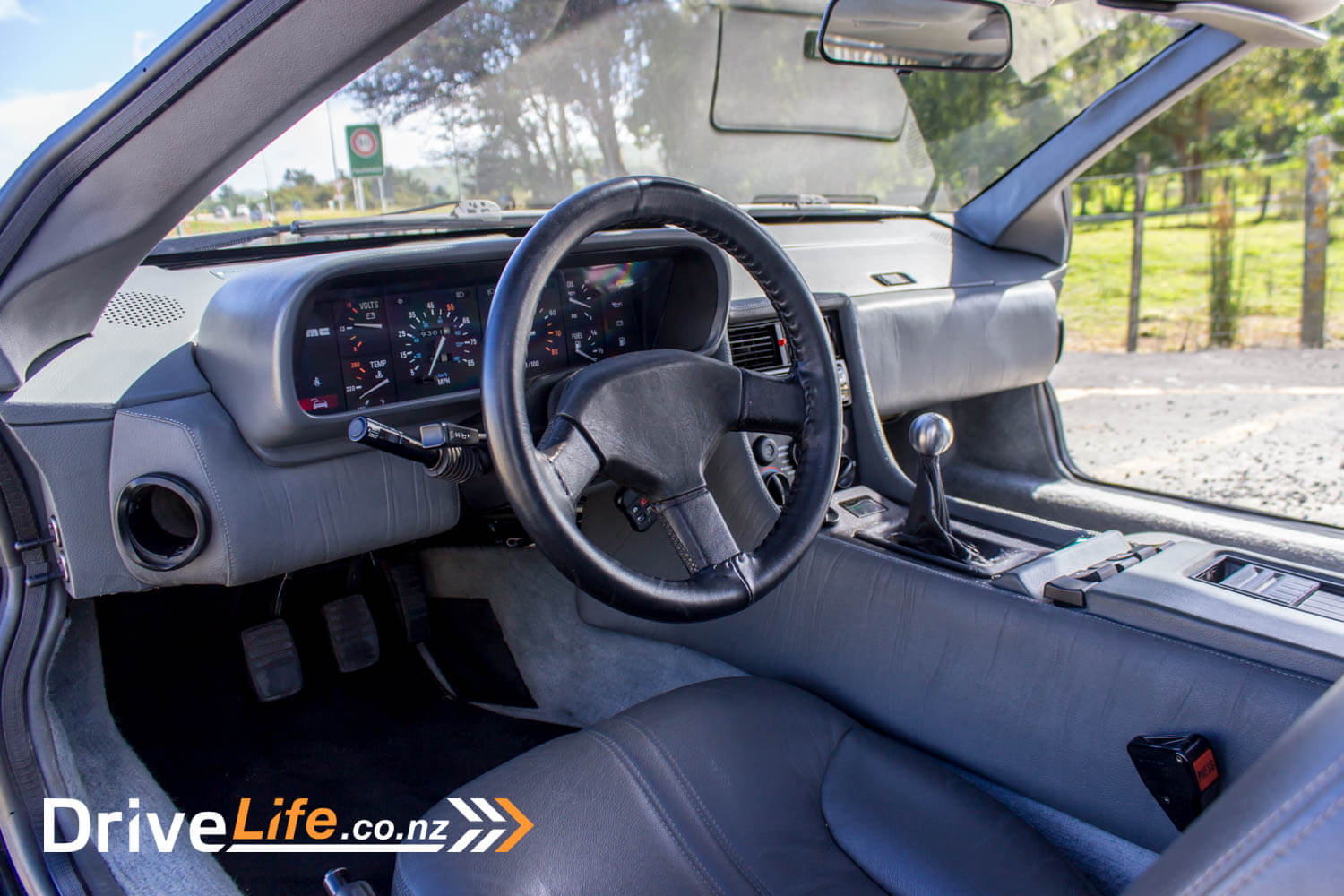
The previous owner bought the car when it was ten years old, then shipped it to New Zealand when he moved here. Mike and his wife have owned it for 9 months, with no mechanical issues so far.
One of those receipts is for a factory performance kit, which Mike thinks adds about 50hp to the car. It certainly seems to go well. I had visions of a slow, automatic DeLorean. It isn’t slow, it’s a manual – and it sounds great, thanks to the new factory performance exhaust system fitted by the previous owner.
I wasn’t the only one with this preconception of a DeLorean, says Mike.
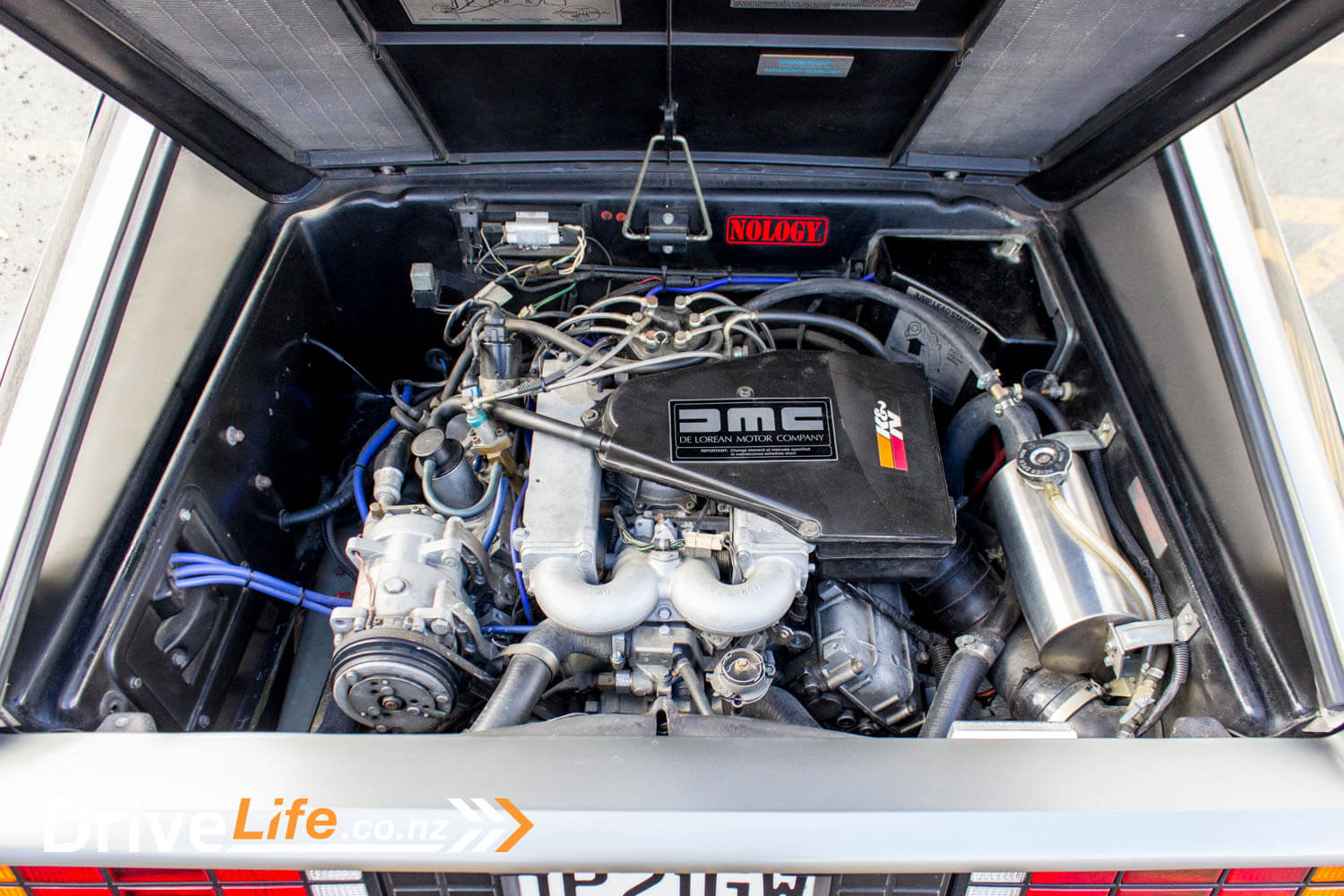
“Lots of people, when they hear you have one, say things like ‘oh it must be a piece of shit’, but it’s not. It’s got a Lotus chassis, a Renault V6 motor and manual gearbox and the car was designed by the Italian designer Giorgetto Giugiaro – who incidentally never got paid.”
Standard output from the 2.9-litre V6 is 97kW (130hp). “Everything I’ve read about the car say they are a slug, but it really isn’t with the performance kit added.” Performance for standard cars when new wasn’t startling; 8.2 seconds to 100km/h for the manual and 10.2 for the auto. Still, that was 1983, so when you look at it that way, it was average – but perhaps not for a sports car that looked this fast.
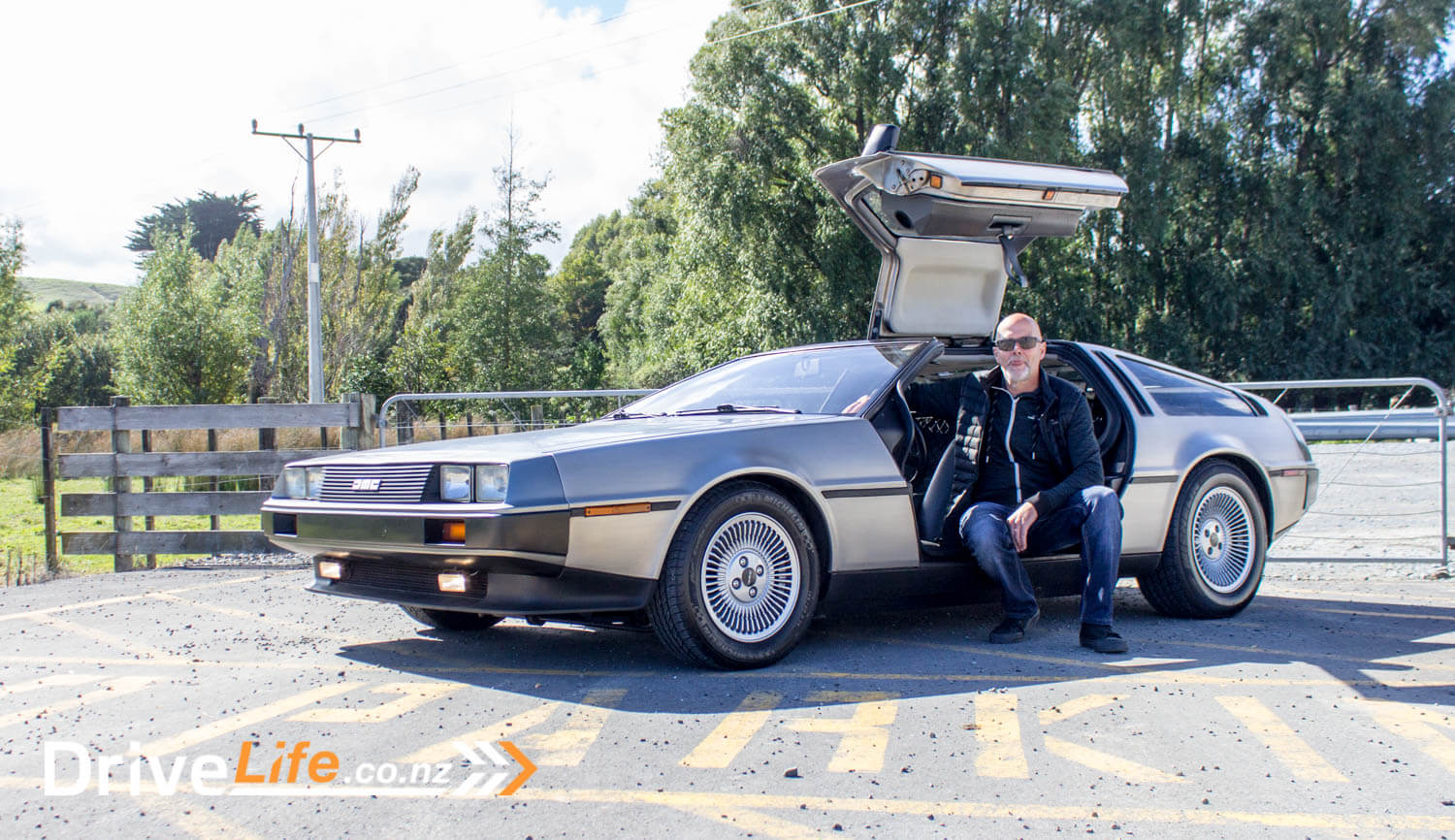
Mike says people are often surprised it’s a left-hand drive car, but only 16 right-hand drive factory-authorised DeLoreans were ever produced.
There are 15” alloys wheels at the back, and 14” at the front. Apparently John DeLorean thought it would look more macho like that. The spare is a 14” front wheel. I expect you’d need to be very careful driving in the rain with the smaller spare on the rear.
“When they sold them initially, they were grossly overpriced so they made everything optional – right down to the radio. Our cars has upspec sway bars and suspension, as well as the factory lowering kit, so it sits a lot lower than those that don’t. It actually handles really well, after all it’s sitting on a Lotus Esprit chassis.”
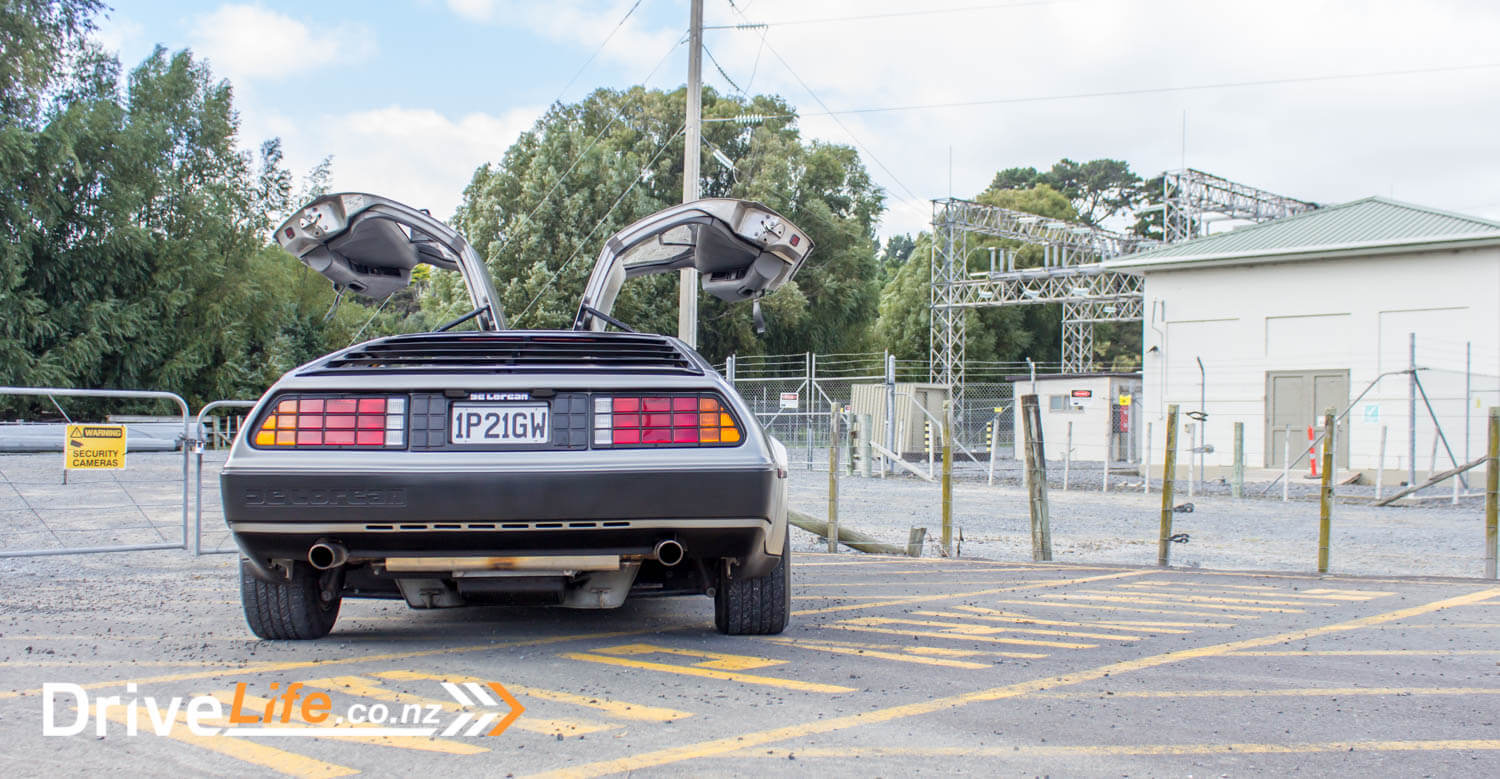
He often takes the car across the Rimutaka Hill to the Wairarapa, and says he’s always surprised how well it handles. “Mind you,” he says, “it is built on a Lotus chassis and is very low.” How low? With the factory lowering kit, Mike’s DeLorean sits just 3/4 of an inch higher than a Ford GT40.
You would think being rear-engined, it would be a handful in the wet, and Mike has yet to drive it in the rain. He thinks it would feel like his 911 Targa, and likely he’s right. According to Mike, the board at DeLorean wanted the motor in the middle for better handling, but John DeLorean wanted the motor in the back so he could get his golf clubs in the car behind the seats. He won.
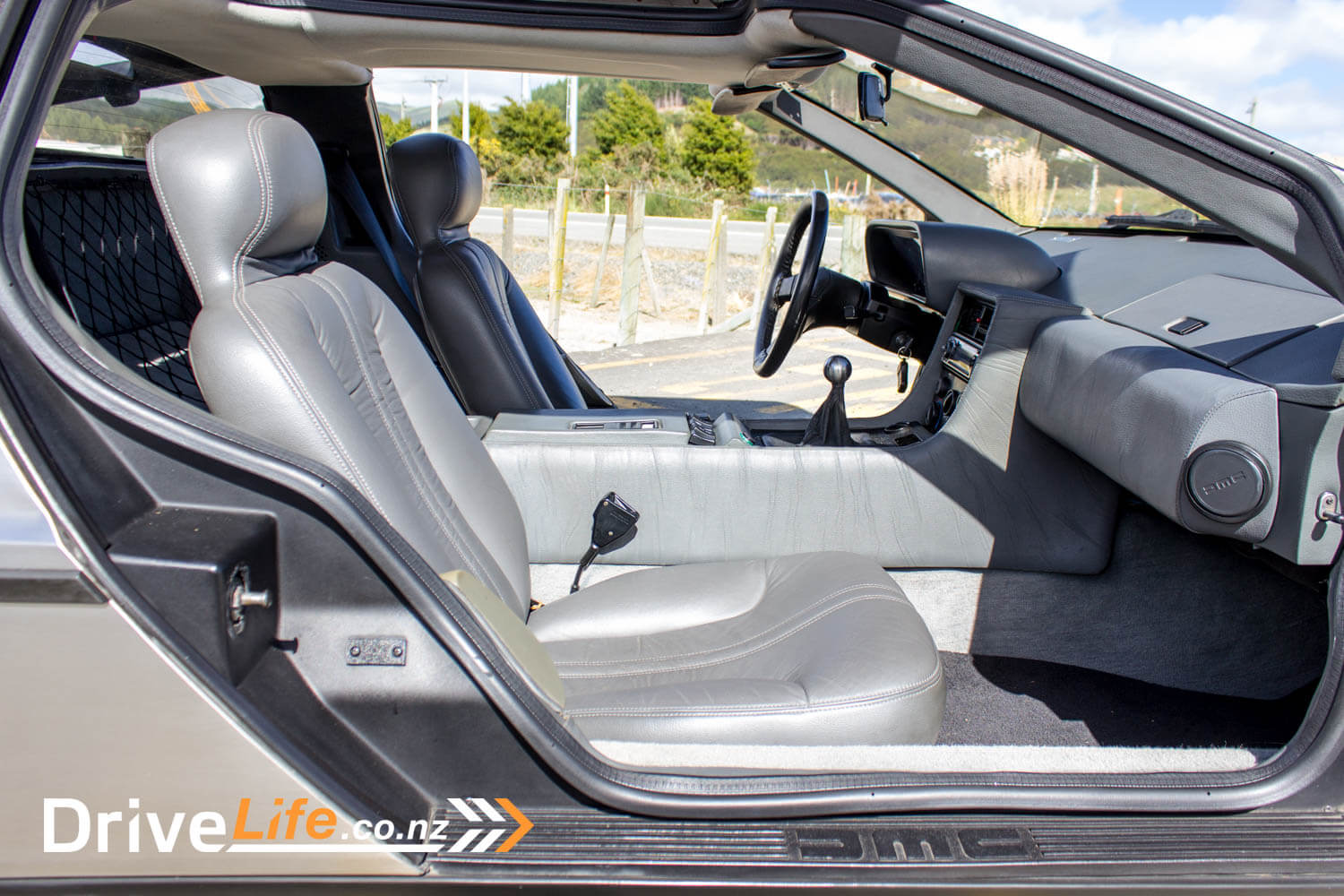
Mike hasn’t added any mods to the car, and other than replacing some of the rubbers, and doesn’t have any plans for modifying it. Some parts interchangeable from other makes, otherwise it’s ten days from the USA for any part he says.
It was obvious Mike just enjoys driving it, and of course talking to people who come up to him whenever he stops.
While we were having coffee and chatting, there was almost an endless flow of people driving past, seeing the car, then stopping and taking photos.
“People stop me everywhere, to take photos and ask questions. The most common question is ‘where is the flux capacitor?’”
That was interesting, as when we were taking photos, a guy in a van stops and wanders over – and without missing a beat, he asks where the flux capacitor is.
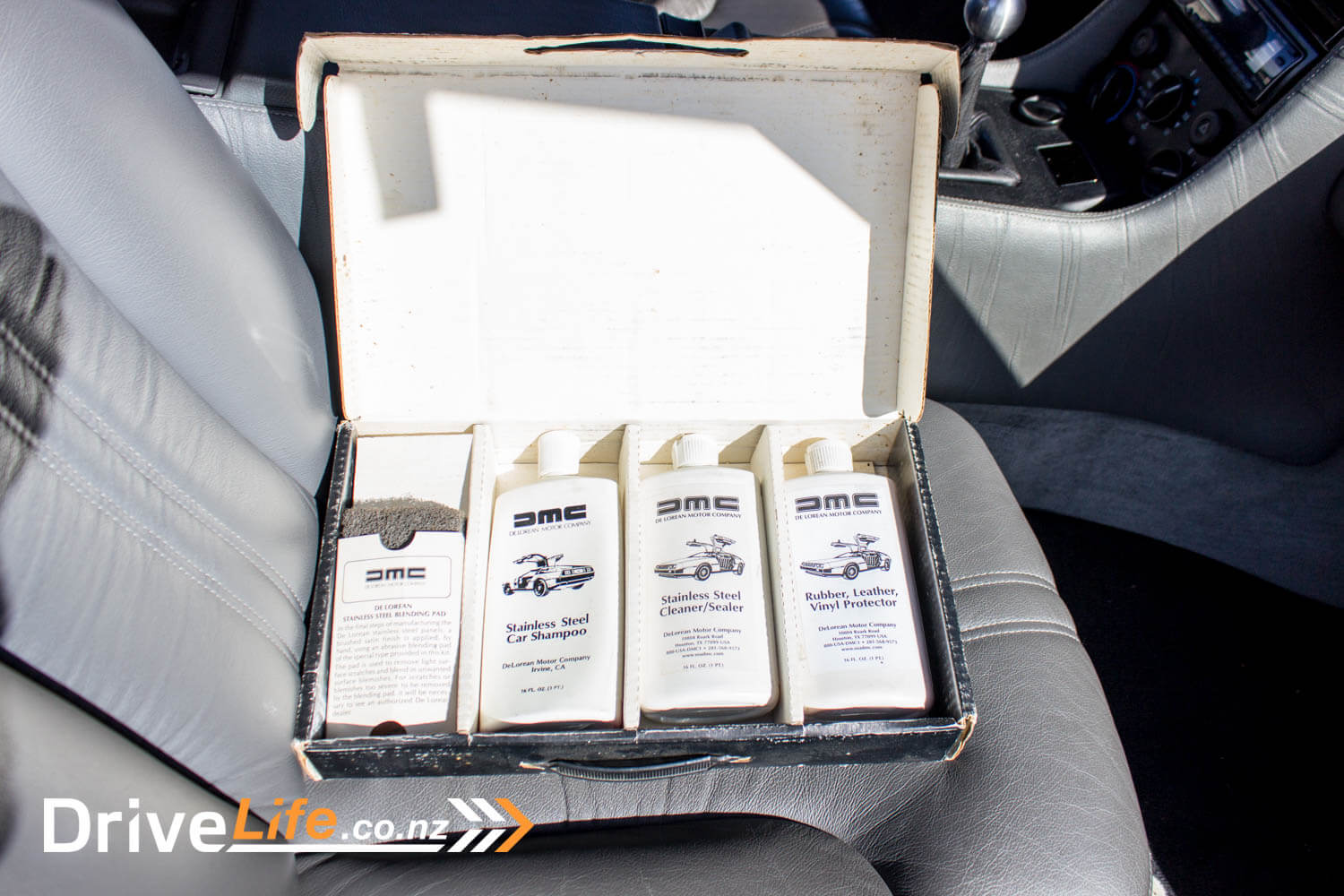
The car is like a magnet to certain ages Mike says, and it seems to be mid to late 20s. But he does get all sorts coming to talk about the car. It’s one of those fun cars that makes people smile. People will start a conversation at the drop of a hat he says.
With a total run of less than 9,000 cars built in Ireland, this is one rare car. No doubt Mike and Irene will have years more to enjoy it.
On January 27, 2016, DMC in Texas announced that it planned to build about 300–325 ‘new’ 1982 DMC-12 cars, each projected to cost just under US$100,000.
https://en.wikipedia.org/wiki/DeLorean_Motor_Company


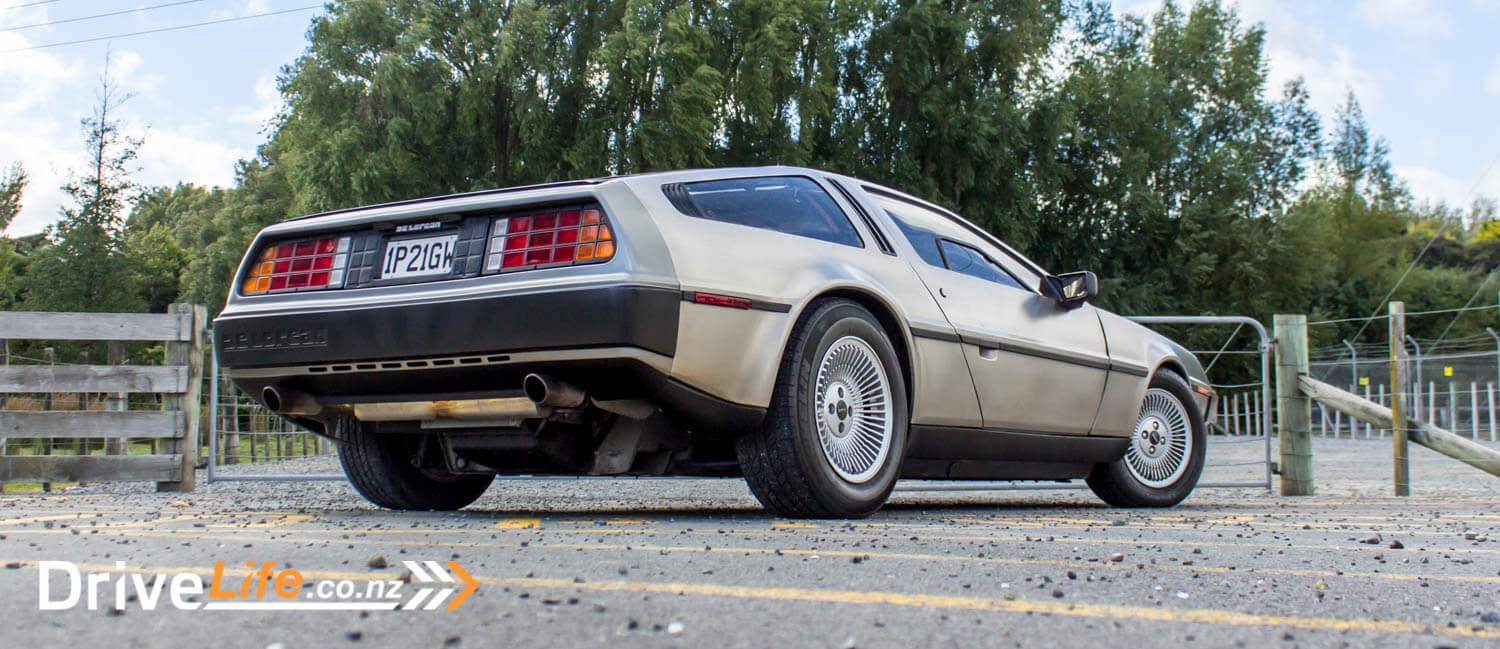
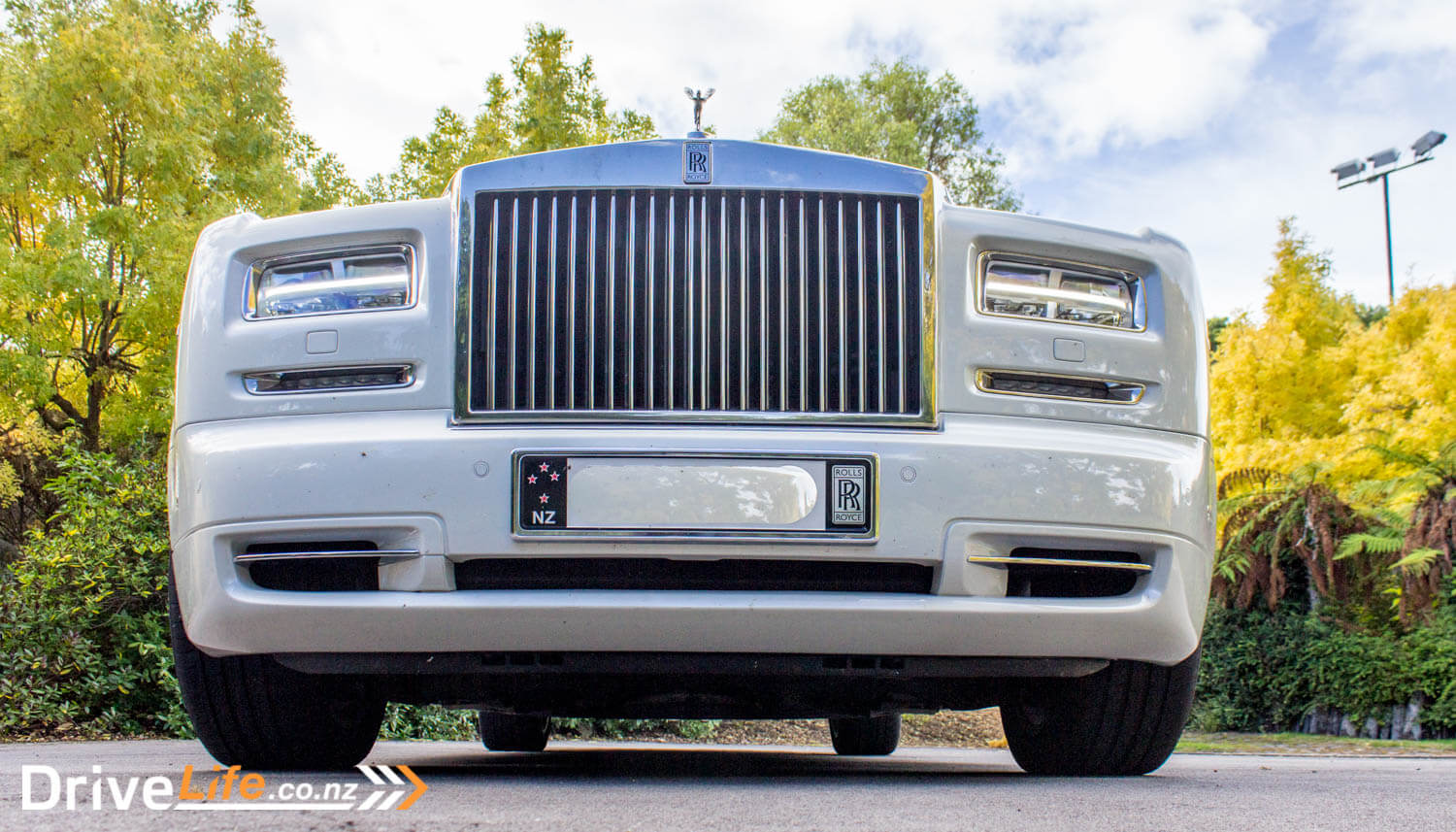
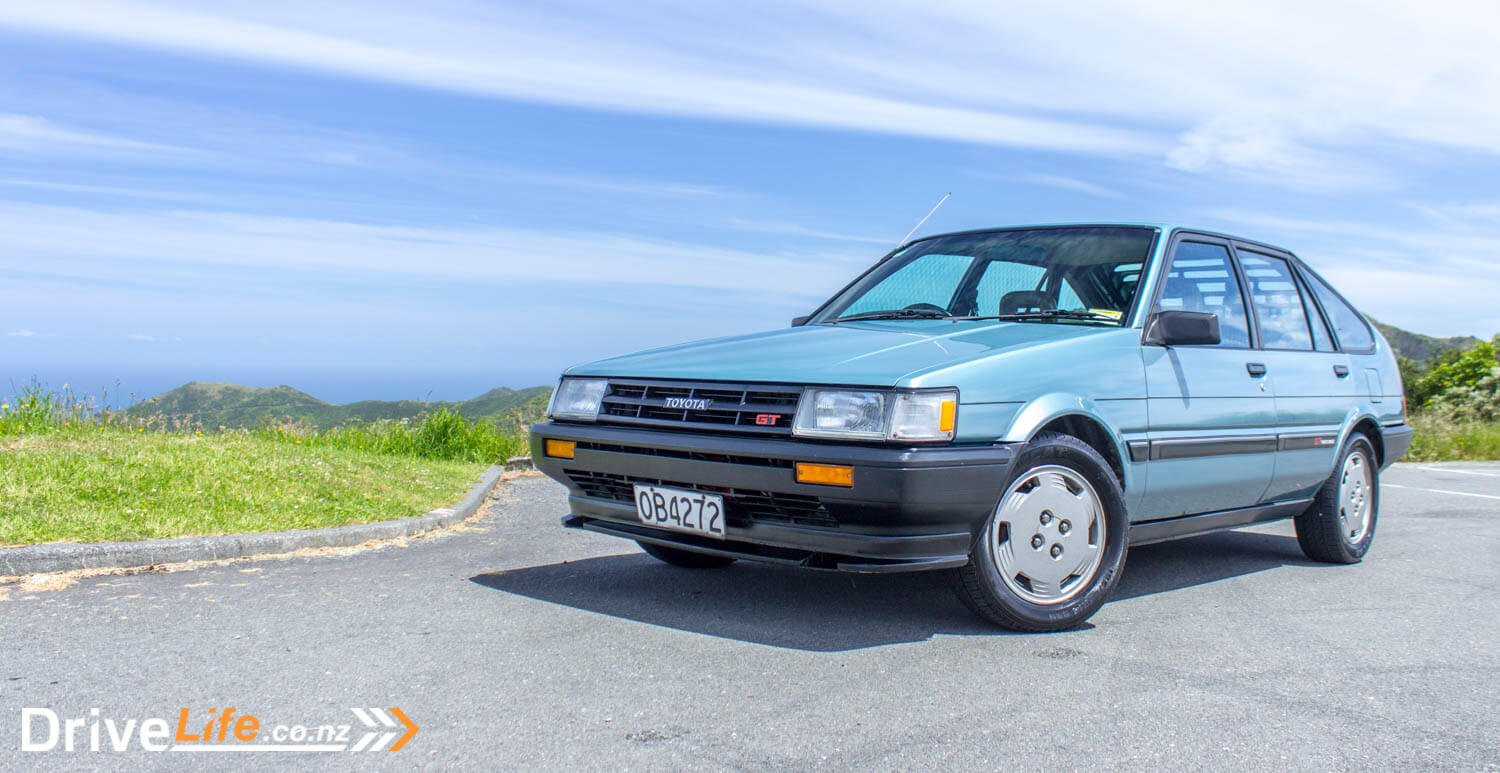
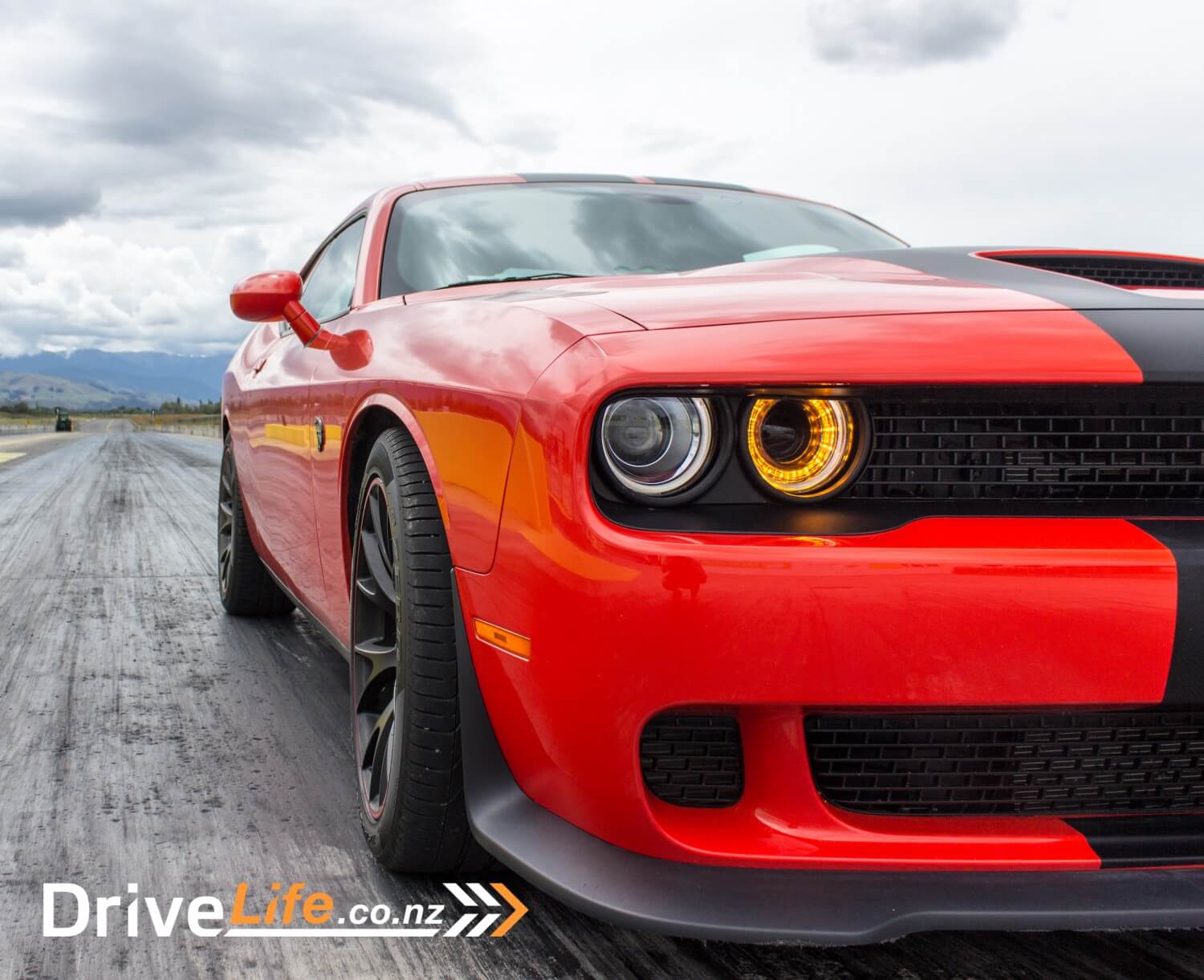








































You were doing alright until you got to the part about options. The radio was standard. There were a grand total of 2 choices to make from the factory: Black or Gray interior (same price,) and a manual or optional automatic transmission ($450). From the dealerships, you could buy a car cover, one of two types of stripes for the side, and a mountable luggage rack. That was it.
HI there Hollywood
Thanks for the feedback. I can’t actually remember where I got the info from for this article, but appreciate the corrections!
Cheers
Fred
The size difference between the front and rear wheels & tires was an engineering decision, not a cosmetic one. With the majority of the car’s weight being behind the rear axle due to the engine placement would make the car more susceptible to oversteer, where the rear end of the car breaks loose during cornering in curves before the front does, which can be very difficult to recover from and fairly dangerous. Having smaller wheels and tire width sizes in the front helps to counter this effect by promoting understeer which has the opposite effect but is much easier and safer to control.